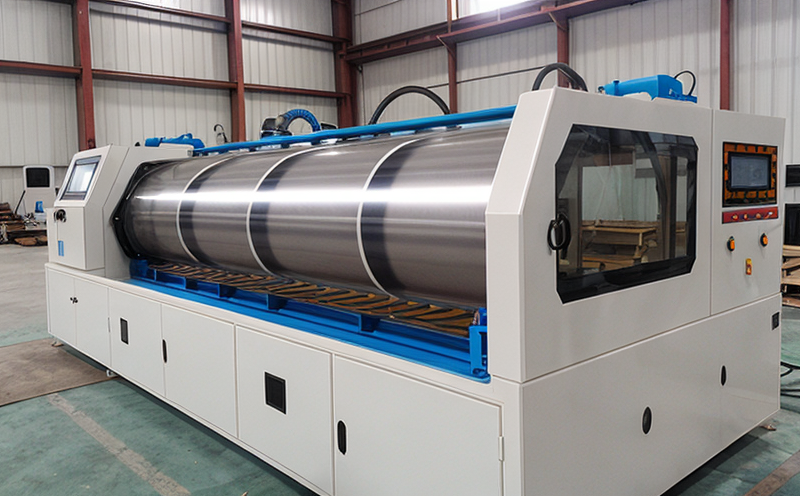BS 3424 Testing of Coated Fabrics Strength and Stability Properties
The British Standard (BS) 3424:1980 is a well-established method for the testing of coated fabrics. This standard provides clear guidelines on how to measure the strength and stability properties of coated fabrics, which are essential characteristics for ensuring product quality in various industries such as textiles, automotive, and aerospace.
The BS 3424 protocol involves several key steps that ensure accurate and reliable results. The process begins with specimen preparation where the fabric sample is cut to specific dimensions according to the standard's requirements. Once prepared, the samples are tested using specialized equipment designed for tensile testing and stability measurements.
One of the most critical aspects of this test is understanding the difference between static and dynamic loading conditions. Static loading simulates real-world scenarios where the fabric must withstand constant pressure over time, while dynamic loading assesses how well the material performs under fluctuating loads. By evaluating both types of loading, manufacturers can better predict the lifespan and performance of their products.
Another important consideration is temperature control during testing as it significantly affects the mechanical properties of coated fabrics. Different materials have different optimal temperatures for maintaining their structural integrity. Therefore, precise regulation of environmental conditions throughout the test ensures accurate results that reflect realistic end-use situations.
| Parameter | Description |
|---|---|
| Tensile Strength | The maximum force a material can withstand before breaking, measured in Newtons per square meter (N/m²). |
| Stability | How well the fabric maintains its shape and size under stress over time. |
| Dynamic Loading | Testing that simulates real-world conditions where forces change over time. |
| Static Loading | Continuous application of force to evaluate long-term performance. |
The BS 3424 test also considers environmental factors like humidity and temperature, which can influence the behavior of coated fabrics. For instance, higher humidity levels may cause some coatings to degrade faster than others, thereby affecting overall durability. Understanding these variables helps manufacturers design products that meet specific performance expectations across diverse climates.
In conclusion, BS 3424 testing plays a crucial role in ensuring high-quality standards for coated fabrics by providing consistent and reproducible data. This information is invaluable not only for quality control but also for research and development efforts aimed at improving product performance through better understanding of material behaviors under various loading conditions.
International Acceptance and Recognition
The BS 3424 standard has been widely adopted not only in the UK but also internationally. Many countries recognize this British Standard as a valuable benchmark for evaluating coated fabrics, especially those used in critical applications requiring stringent quality control measures.
One reason for its global acceptance lies in its comprehensive approach to assessing both static and dynamic loading conditions, ensuring that manufacturers account for all relevant aspects when designing their products. Additionally, the standard’s emphasis on precise environmental controls adds credibility since many industries rely heavily on accurate material property data.
| Countries Recognizing BS 3424 | Industries Benefiting Most |
|---|---|
| Australia, Canada, USA, Germany | Automotive, Aerospace, Textiles, Construction |
Besides national standards organizations like ASTM or DIN that often align their recommendations with BS 3424 due to its rigorous methodology, this standard contributes significantly to international harmonization efforts. Such cooperation fosters better collaboration among trading partners and enhances global supply chains.
Overall, the widespread adoption of BS 3424 reflects industry confidence in its ability to deliver reliable results that meet high safety and performance standards across different markets worldwide.
Environmental and Sustainability Contributions
The textile industry is increasingly focusing on sustainability, and BS 3424 testing plays an essential role in this endeavor. By ensuring that coated fabrics meet stringent quality criteria, the standard helps promote responsible manufacturing practices which contribute positively to environmental protection.
Eco-friendly production methods become more feasible when high-quality materials are consistently produced according to established standards like BS 3424. This consistency allows manufacturers to optimize resource usage efficiently while minimizing waste generation during processing stages.
Moreover, by identifying weak points in the coating or laminate structure early on through rigorous testing per BS 3424 guidelines, companies can implement targeted improvements that enhance overall product performance without compromising ecological benefits. Such proactive measures help reduce energy consumption associated with repeated trials and errors resulting from suboptimal designs.
Finally, adhering to such robust standards encourages transparency within supply chains, fostering trust between stakeholders involved in sourcing raw materials and final assembly processes. This enhanced communication leads to better informed decisions regarding sustainable choices throughout the entire lifecycle of textile products.
Use Cases and Application Examples
- Aerospace: Coated fabrics are used in aircraft interiors for enhanced durability against harsh conditions.
- Automotive: These materials provide protection against wear, tear, and UV degradation inside vehicles.
- Furniture: Upholstery made from these coated fabrics offers superior comfort combined with longevity.
| Use Case | Description |
|---|---|
| Aerospace | Critical components require exceptional strength and resistance to environmental factors like temperature fluctuations and moisture exposure. |
| Automotive | Interior fabrics must be durable yet comfortable, providing a pleasant experience for passengers over extended periods. |
| Furniture | High traffic areas benefit from coated fabrics that offer both aesthetic appeal and practical functionality. |
In all these applications, the BS 3424 testing protocol ensures consistent quality across batches of products, helping to maintain brand reputation and customer satisfaction. It also supports continuous improvement initiatives aimed at developing new generations of coated fabrics that meet evolving market demands while maintaining stringent environmental standards.





